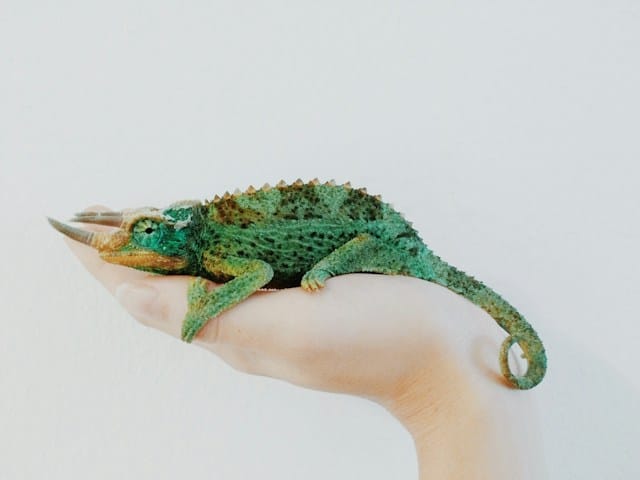How to Safely Transport Your Pet Reptile?

As reptile owners, you all understand the unique challenges these fascinating creatures present. They’re far from your average pet! Whether you own a docile bearded dragon, a curious gecko, or a slithering corn snake, reptiles require specialized care and attention. There may come a time when you need to transport your scaly friend: maybe you’re relocating, heading to the vet, or simply going on a road trip. Whatever the reason, this process can seem daunting. Reptiles have specific needs, and transporting them safely can seem like a complex task. But don’t worry! With a little planning, you can ensure your pet makes a safe and comfortable journey.
Preparing for the Move
Before you even start packing up your pet, there’s a bit of prep work to do. Understanding your reptile’s specific needs is key. Different species will handle transport in different ways: a snake’s requirements will differ from a tortoise’s, for example. Research is critical to ensure you are adequately prepared to move your pet.
Dans le meme genre : How to Safely Introduce Your Pet to New and Unfamiliar Animals?
When planning a move, it’s important to keep in mind the duration of the journey and the possible environments your pet might encounter. Think about the climate and temperature, as this can greatly impact a reptile’s wellbeing. Some species, for instance, need to stay warm, while others can tolerate cooler temperatures.
Choosing the Right Carrier or Container
Once you understand your reptile’s needs, the next step is to choose the right carrier or container. A suitable carrier will be secure, comfortable, and provide the proper ventilation for your pet. Depending on the size and species of your reptile, the best available options will vary. For example, small reptiles like geckos or anoles might be comfortable in a padded, ventilated container, while larger reptiles like iguanas or pythons might require a more sturdy, hard-sided carrier.
Lire également : How to Effectively Train and Care for a Miniature Horse?
Regardless of the size and type of your pet, make sure the carrier is escape-proof. Reptiles are known for their ability to find a way out of enclosures, and the last thing you want during transport is a loose reptile in your car!
Packing Your Reptile Safely
Once you’ve chosen the right carrier, the next step is to pack your reptile properly. Remember, safety is paramount. Ensure the carrier has some form of bedding or lining to cushion any bumps that may occur during transit. Using a familiar material from your pet’s enclosure can help make them feel more comfortable.
Depending on your reptile’s species, you might also need to provide a heat source. Heat packs or warm water bottles can be used to maintain the temperature, but make sure they’re not in direct contact with your pet, as this could cause burns.
Lastly, consider including a hideaway or shelter within the carrier, especially for reptiles that are prone to stress. This will provide them with a safe place to retreat to if they feel anxious during the journey.
Traveling by Car
If you’re traveling by car, there are additional steps to ensure your pet’s safety. Keep the carrier secure at all times, preferably seat-belted in the back seat. Avoid placing it in the trunk as this area can quickly become too hot or too cold.
Avoid blasting the air conditioner or heater, as this could create a drastic shift in temperature. Instead, aim to maintain a steady, moderate temperature in the car. Remember, too, that car journeys can be stressful for reptiles. Minimize the number of stops and try to keep the noise levels low.
Air Travel with Your Reptile
Air travel with reptiles is a more complex process and may not be suitable for all species. Before booking a flight, check the airline’s pet policy. Some allow reptiles in the cabin, others only in the cargo, and some do not allow them at all. Also, be sure to check any quarantine rules or restrictions at your destination.
If air travel is necessary, make sure your pet is comfortably secured in a carrier that meets airline specifications. Like car travel, consider using heat packs to maintain temperature, and provide a hideaway for your pet to retreat to.
Remember, moving can be a stressful event for your pet. Whether by car or plane, do your best to minimize this stress by preparing properly and keeping their needs in mind throughout the journey. With careful planning and consideration, you can ensure a smooth and safe transition for your pet reptile.
Arrival at Your Destination
After a long journey, it’s time to unpack your reptile and give it a chance to acclimate to its new surroundings. When you reach your destination, whether it’s a new home, a vet clinic, or a friend’s house, ensure the environment is suitable and safe for your pet. The area should be clean, free from harmful substances, and if possible, set up similarly to your pet’s previous habitat to help reduce stress.
For those keeping reptiles as exotic pets, remember that it’s always good practice to have your pet’s new habitat set up before you begin the move. This allows you to simply place your pet in its new environment and minimizes the disruption.
In the case of moving reptiles, it’s not uncommon for them to become stressed and possibly refuse to eat for a few days. Monitor your pet closely for any signs of stress or illness. If your reptile appears unwell, immediately contact a reputable reptile veterinarian.
For snakes and some lizards, it can be beneficial to offer a small meal a day or two after the move, once they’ve had a chance to settle in. However, always follow the feeding recommendations for your specific species.
In the case of a long journey, particularly air travel, it’s important to give your reptile time to rest and rehydrate. Provide fresh water and a quiet, undisturbed area for your pet to recover from the trip.
Concluding Thoughts on Safely Transporting Your Pet Reptile
Transferring your reptile safely and properly should not be a daunting task if you’ve done your research and planned ahead. Remember, each step of the process, from preparing for the move to selecting the right travel carrier for your pet, is vital in ensuring your pet’s safety and well-being.
Whether you’re moving your lizard, snake or any other reptilian friend, it’s important to be patient and attentive to their needs. Transporting your pet may require some extra effort and time, but these exotic pets are worth it. Their health and comfort should always be a top priority, especially during something as potentially stressful as a move.
Pet transportation, particularly for reptiles and amphibians, is a unique challenge. But with the right knowledge, equipment, and attitude, you can make the journey as smooth and stress-free as possible for your pet.
While this guide provides a comprehensive overview of how to transport your reptile, it’s essential to consult a veterinarian or a professional in reptile care for personalized advice tailored to your pet’s specific needs.
Remember, your pet’s safety and comfort are in your hands. By taking the time to prepare, choose the right carrier, and pack and transport your pet properly, you demonstrate respect and care for your unique and fascinating pet. As reptile owners, we have the privilege and responsibility to ensure our pets thrive, even during relocation.
Take the time to understand your pet’s needs, prepare accordingly, and your reptile will be a happy traveler!
